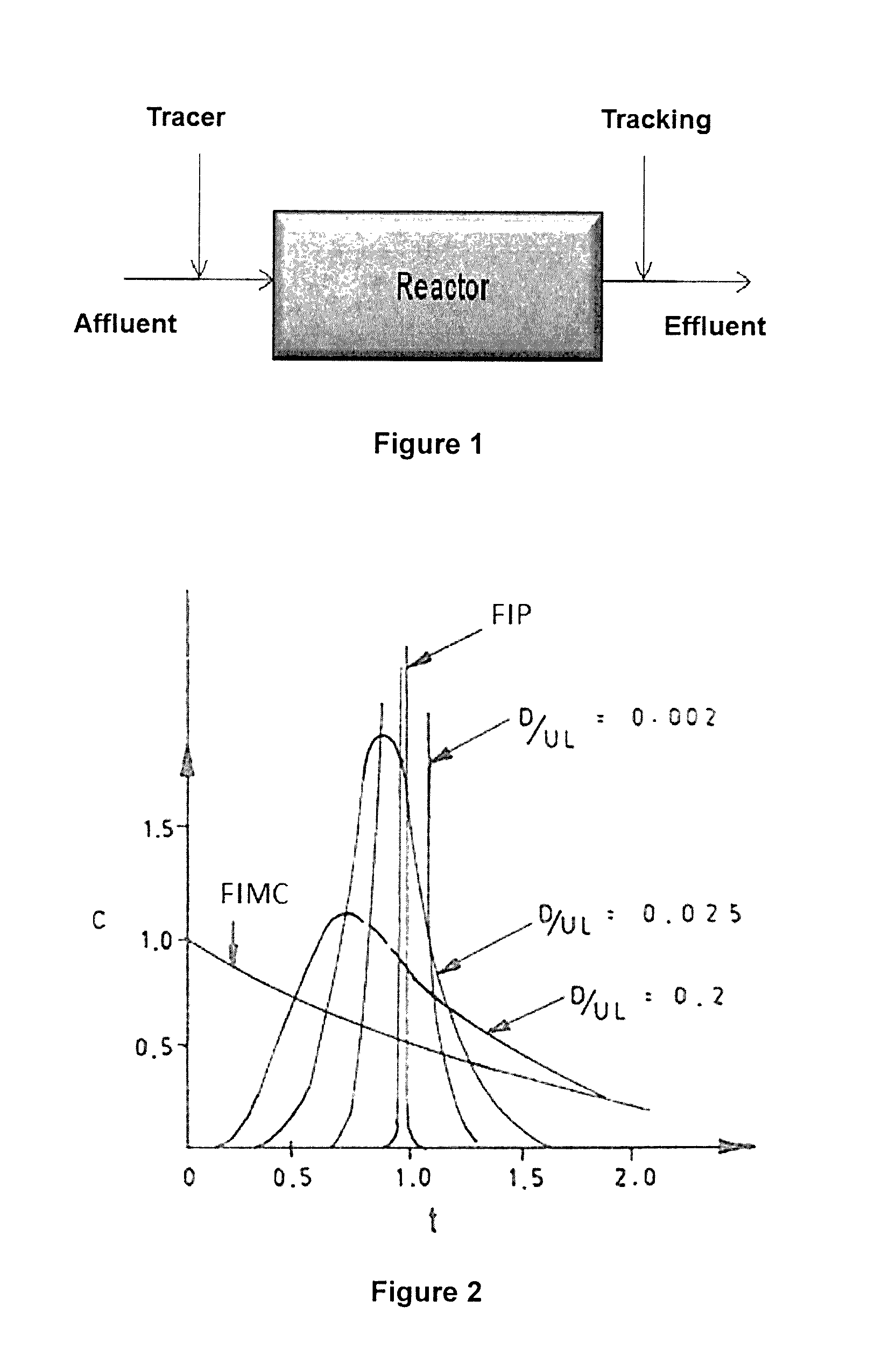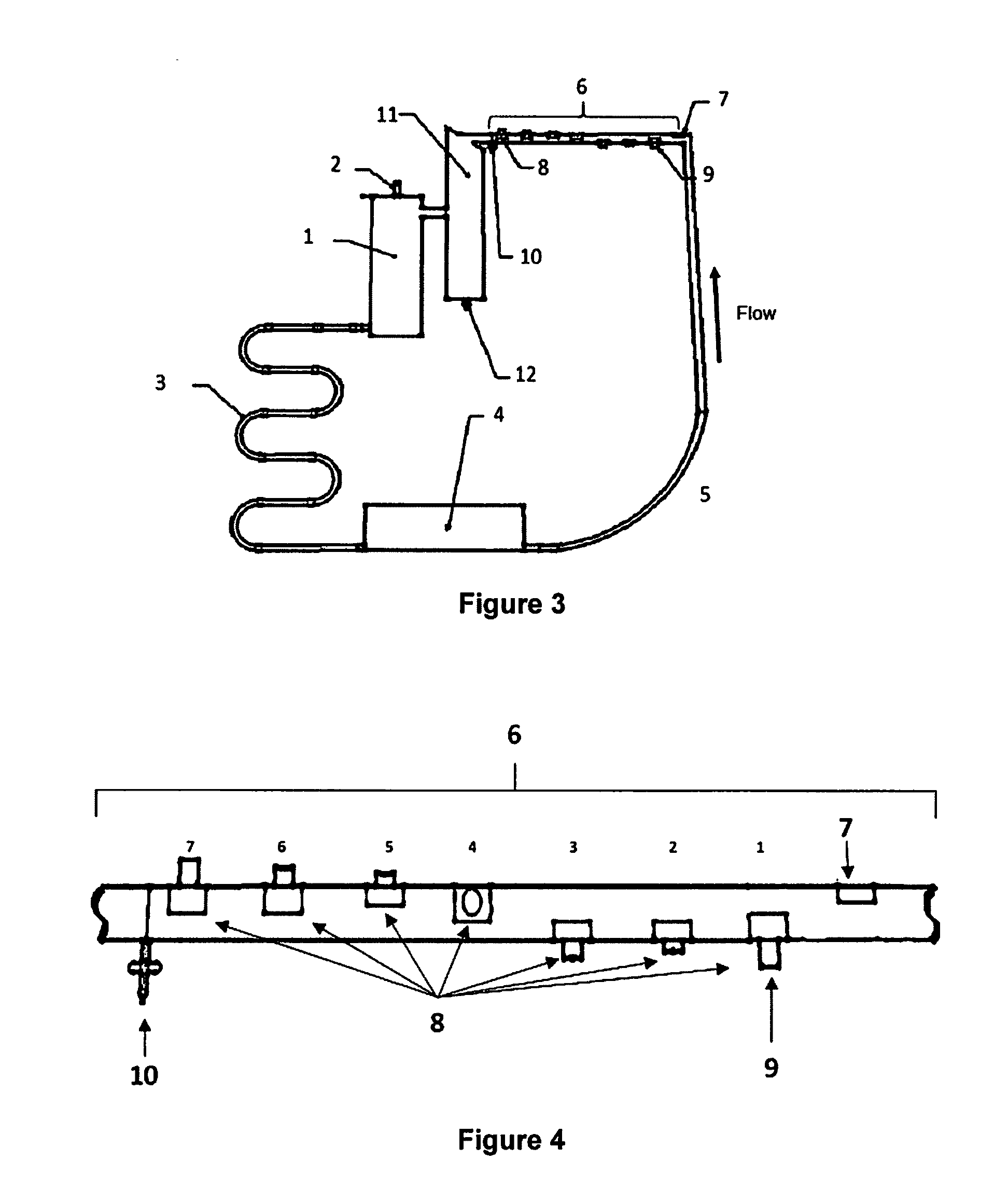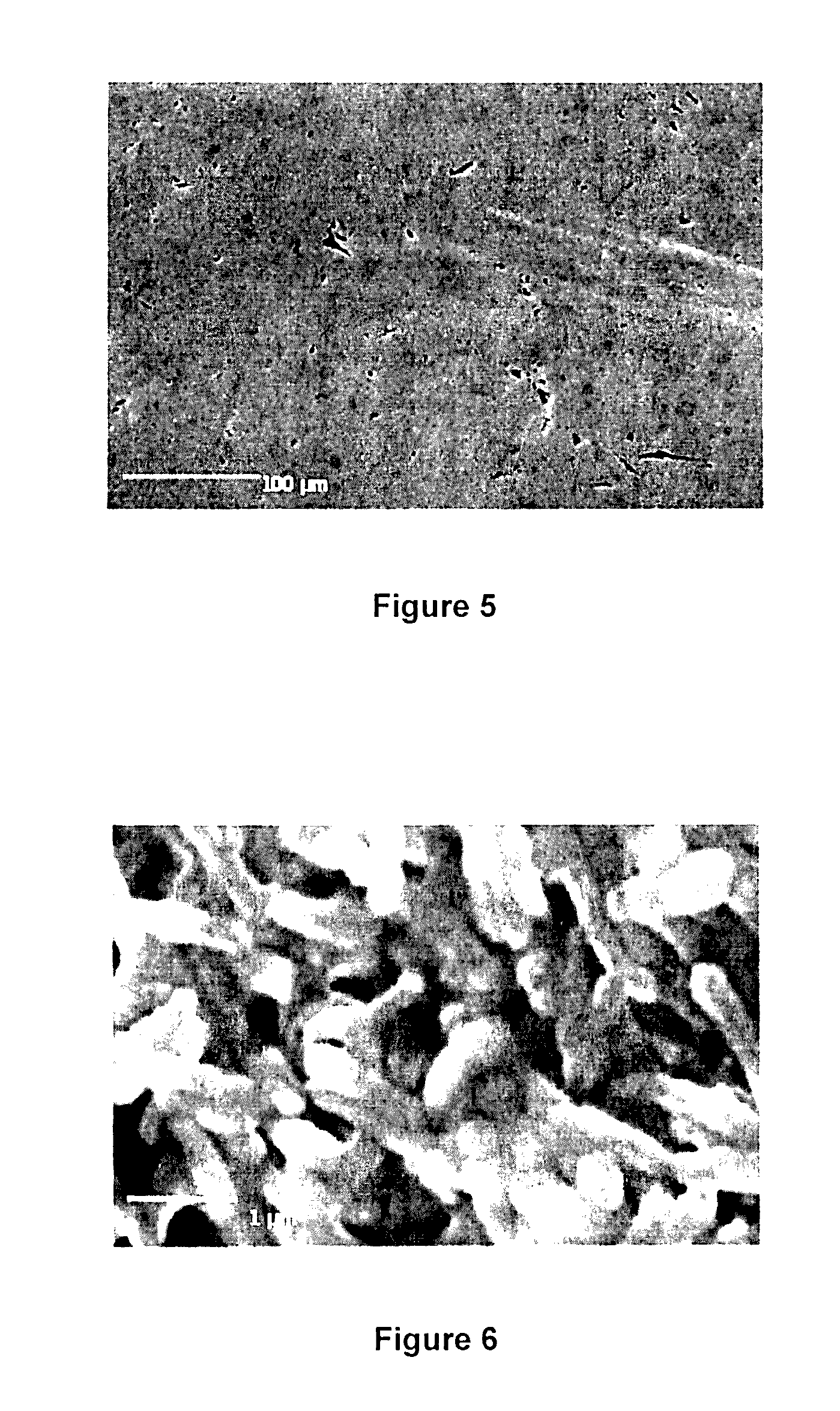Bioreactor for the in situ study of microbial biofilms inducing corrosion on metal surfaces
a bioreactor and in situ study technology, applied in the field of bioreactors and methods for in situ study of mesophilic and thermophilic microbial biofilms, inducing corrosion on metallic surfaces, can solve the problems of accelerating aging and destruction, deteriorating metal physical and chemical properties, and serious problems affecting various industries, so as to prevent contamination
- Summary
- Abstract
- Description
- Claims
- Application Information
AI Technical Summary
Benefits of technology
Problems solved by technology
Method used
Image
Examples
example 1
[0154]Corrosimetric test coupons were prepared, cleaned and evaluated, following protocols ASTM G 1-90, NACE Standard TM0169 and RP0775, through the gravimetric method.
[0155]The cleaned and processed corrosimetric test coupons were weighed and installed in the bioreactor's coupon support section, ready for microbial biofilm formation, under aseptic conditions.
[0156]The bioreactor was operated using oil industry produced water as the fluid, at 42° C. This procedure was performed in duplicate, i.e. in two runs; the operating time was 1,450 hours for each. Subsequently, the corrosimetric test coupons were removed and treated for cleaning and evaluation, as described in the protocols above.
[0157]The corrosimetric test coupons were observed using an environmental scanning microscope with and without a biofilm.
[0158]The characteristics of the oil industry production water used were the following: 118 g / L NaCl, pH=7.1, temperature of 42° C. in situ (sampling site). It is worth noting that ...
PUM
 Login to View More
Login to View More Abstract
Description
Claims
Application Information
 Login to View More
Login to View More - R&D
- Intellectual Property
- Life Sciences
- Materials
- Tech Scout
- Unparalleled Data Quality
- Higher Quality Content
- 60% Fewer Hallucinations
Browse by: Latest US Patents, China's latest patents, Technical Efficacy Thesaurus, Application Domain, Technology Topic, Popular Technical Reports.
© 2025 PatSnap. All rights reserved.Legal|Privacy policy|Modern Slavery Act Transparency Statement|Sitemap|About US| Contact US: help@patsnap.com



